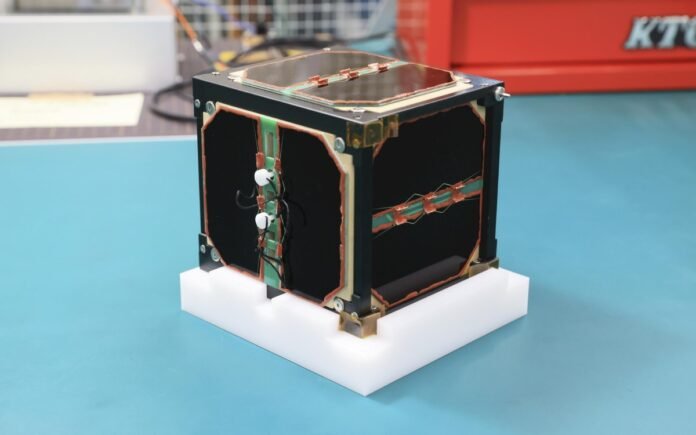Solar panels are attached to the black facets of the world’s first wooden satellite, developed by Kyoto University and Sumitomo Forestry Co.
14:04 JST, June 30, 2024
The world’s first wooden satellite, recently completed by Kyoto University and Sumitomo Forestry Co., was unveiled to the press on May 28.
When a satellite burns up in the atmosphere after completing its mission, it produces metal particles. However, wooden satellites can reduce the amount of these particles.
The new, small satellite is expected to launch from the United States to the International Space Station in September and will then be launched from the Japanese ISS module in the Kibo laboratory.
The satellite is a 10-centimeter cube and weighs about 1.1 kilograms, including the electronic circuitry inside. The box is made of honoki, the Japanese large-leaf magnolia, which is used to make sword scabbards and other objects. A traditional framing technique was used to make the satellite, in which the pieces are assembled without nails or screws.
Solar panels are attached to the surface of the satellite. This will send data about his condition, such as warping and body temperature, to Kyoto University for about six months. The data will be used for demonstrative experiments to see if wooden materials can be used in space.
“In the future, we will be able to plant trees on the moon and Mars and then build houses there,” says astronaut Takao Doi, also a program specific professor at the university and member of the team that launched the satellite.



